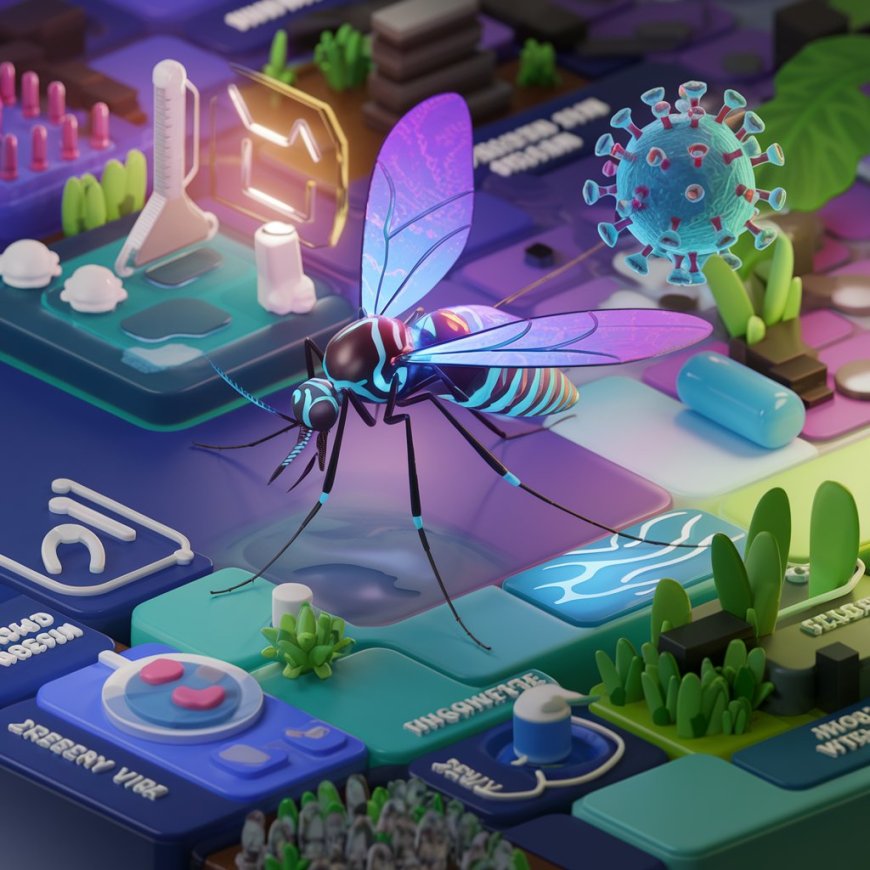West Nile Virus, Symptoms, Prevention, and Public Health Implication
West Nile Virus is the most prevalent mosquito-borne virus that affects the United States and results in flu-like symptoms to Neurological complications. Find out how it spreads, its signs, and how you can keep yourself and your community safe from this emerging health menace.

West Nile Virus, Symptoms, Prevention, and Public Health Implication
West Nile virus (WNV) is a mosquito-transmitted infection first identified in the United States in 1999. It has since become the most commonly acquired mosquito-borne disease within the continental U.S., with thousands of cases reported annually.
Usually transmitted to humans through the bite of an infected mosquito, the virus manifests with a spectrum of effects, from mild flu-like symptoms to severe neurological complications. More awareness about WNV, particularly when there are notable cases like the recent illness of Dr. Anthony Fauci, helps to understand the transmission route, symptomology, and ways one can protect oneself from contracting it.
A History and the Global Spread of West Nile Virus

West Nile virus was first detected in Uganda's West Nile District in 1937. The virus stayed confined within Africa for quite some time but later expanded to Europe, the Middle East, and Asia. The virus reached North America in 1999 when patients with WNV were reported in New York City. From there, the virus invaded the USA and Canada, becoming endemic in these regions, particularly warmer states.
The virus mainly spreads through bird migration, as birds are the primary hosts of WNV. Mosquitoes acquire the virus by feeding on infected birds and later transmit it to humans and other animals. Over the years, climate change has influenced mosquito behavior, extending their active seasons and increasing the period when people risk infection.
What Is the Transmission of West Nile Virus?
West Nile virus is primarily transmitted through the bite of an infected mosquito, usually of the Culex species. Mosquitoes become infected after feeding on infected birds. In rare cases, the virus may be transmitted through blood transfusions, organ transplants, or from mother to baby during pregnancy.
In the U.S., the peak transmission season occurs in the summer and early fall, when mosquito activity is highest. However, experts warn that a warming climate is lengthening mosquito season and the potential for outbreaks. In some regions, transmission could now start earlier in the year and extend later into the fall.
Signs and Symptoms of West Nile Virus
About 80% of those who become infected will not show any symptoms at all. The remaining 20% of the infected population usually develop WNV disease two to 14 days after being bitten by an infected mosquito. West Nile virus infection is generally mild with flu-like symptoms, which may include:
- Fever
- Nausea
- Headaches
- Aches and pains
- Fatigue
- Rash
These symptoms are usually manageable, although, in some instances, the virus may lead to serious neurological complications. The more serious illness, neuroinvasive West Nile disease, occurs in about 1 out of 150 infected people. Signs and symptoms of neuroinvasive West Nile disease can include:
- Encephalitis (inflammation of the brain)
- Meningitis (inflammation of the membranes surrounding the brain and spinal cord)
Acute flaccid paralysis (sudden muscle weakness)
Individuals with severe West Nile virus disease may have high fever, severe headache, neck stiffness, stupor, disorientation, coma, tremors, convulsions, muscle weakness, vision loss, numbness, and paralysis. Recovery may take several weeks to months, and some neurological effects may be permanent.
Take Dr. Anthony Fauci, for example, whose symptoms developed rapidly. He initially reported feeling tired, but these feelings quickly escalated into severe chills and a very high fever, requiring hospitalization. After numerous tests, the diagnosis pointed to West Nile virus, leading to targeted care. Although Fauci is now recovering at home, his case highlights the unpredictability and seriousness of WNV.
Who Is Most at Risk?
While anyone can contract West Nile virus, individuals in certain groups are at higher risk for severe illness. Older adults, those with compromised immune systems, and people with pre-existing health conditions are most vulnerable. Outdoor workers and those living in areas with high mosquito exposure are also at greater risk.
Protection from West Nile Virus
Since WNV cannot be treated and no vaccine is available, prevention focuses on avoiding mosquito bites and controlling mosquito populations. Here are some effective strategies:
- Use insect repellent: When outdoors, use insect repellent containing DEET, picaridin, or oil of lemon eucalyptus, as these are effective against mosquitoes.
- Wear protective clothing: Long sleeves, pants, and socks help reduce skin exposure, especially during peak mosquito activity times—early morning and evening.
- Remove standing water: Mosquitoes breed in stagnant water, so regularly draining containers like flower pots, birdbaths, and gutters can help keep their numbers under control.
Install screens and use mosquito nets: Prevent mosquitoes from entering living spaces, especially in areas where the virus is prevalent. - Stay indoors during peak mosquito hours: Most mosquitoes are active from dusk to dawn. If you must go outside, take precautions to avoid mosquito bites.
Diagnosing and Treating West Nile Virus
Anyone experiencing symptoms after being bitten by a mosquito, especially during mosquito season, should seek medical attention. WNV is usually diagnosed based on symptoms and a history of mosquito exposure. Though blood tests can detect the virus, most cases do not require them. Milder cases are managed with rest, fluids, and over-the-counter pain relievers. Severe cases may require hospitalization. Patients with neurological complications may need aggressive support, including intravenous fluids, pain management, and, in some cases, respiratory assistance.
The Broader Public Health Impact
Although individual cases of West Nile virus can be severe, the broader public health implications are also significant. Hospitalization costs, long-term care for neurological complications, and lost productivity add up. Communities also invest in mosquito control measures, such as spraying insecticides and treating water sources to prevent outbreaks.
Public health agencies monitor WNV through surveillance programs that track mosquito populations and test for the virus. When elevated activity is detected, local governments may increase public health messaging, advising residents to take extra precautions.
The Role of Climate Change in West Nile Virus Spread
Climate change affects the spread of many vector-borne diseases, including the West Nile virus. Warmer temperatures and altered rainfall patterns extend mosquito breeding seasons and expand the areas where mosquitoes can survive. As these environmental changes accelerate, more regions may see increased WNV transmission, requiring more robust public health preparedness.
Conclusion
West Nile virus remains a significant public health challenge due to its unpredictability and potentially severe complications. As Dr. Fauci’s experience illustrates, even those who take precautions can be affected. Understanding how the virus spreads, recognizing symptoms, and following preventive measures are crucial steps in protecting yourself and your community. With ongoing research and public health efforts, the aim is to minimize the impact of WNV and keep communities safe as the fight against this mosquito-borne disease continues.

